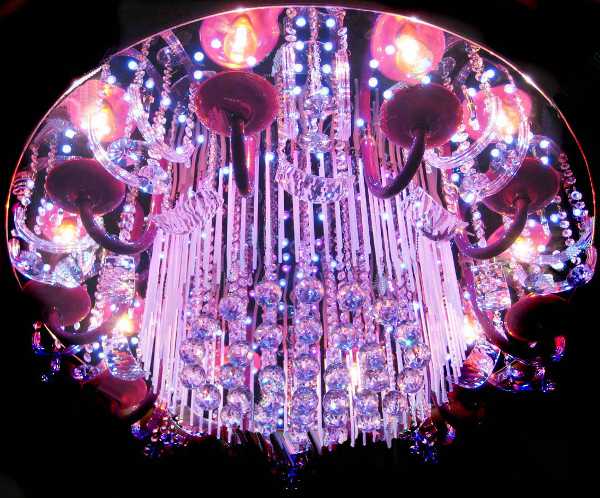FWP:
SETS
GATHERINGS: {6,3}
MIRROR: {8,3}
For background see S. R. Faruqi's choices. This verse is NOT one of his choices; I thought it was interesting and have added it myself. For more on Ghalib's unpublished verses, see the discussion in {4,8x}. This verse is from a different, unpublished, formally identical ghazal, {259x}, and is included for comparison. On the presentation of verses from unpublished ghazals like this one along with formally identical divan ghazals, see {145,5x}.
On one reading (1a), the expression yak aa))iinah is part of a class of (Persianized) yak expressions; for more on these, see {11,1}. For more on the implications of chiraa;Gaa;N , see {5,5}.
Gyan Chand provides another reading (1b) in which a 'mirror-lamps' display is a kind of lighted mirror-chamber. In general, the commentators are so vague, and so mutually contradictory, that I doubt if any of them had a clear idea of what Ghalib meant even by chiraa;Gaa;N , much less by yak aa))iinah chiraa;Gaa;N .
It's also possible that Ghalib himself didn't have a clear idea. In any case, he didn't need one. He made sure that all the audience needed to know was that yak aa))iinah chiraa;Gaa;N was something brilliant, glittering, reflecting, ornamental, and spectacular (also in the sense of providing a spectacle). For what the verse is really doing is (apparently) complaining (or marveling?) that all these attributes have been imposed ('bound') onto the 'privacy/seclusion of coquetry', the way a glittering necklace or hair-ornament might be 'bound' onto some beautiful beloved.
But then again, perhaps the tone isn't that of complaint or wonder at all; after all, grammatically the line is framed as an inquiry: who (or what) has imposed such spectacular showiness on the seclusion of coquetry? The technique goes right back to {1,1}, and its inshaa))iyah quality leaves the tone of the verse opaque.
For not only can we not tell who's done it, we can't even be sure to whom it's been done. Whose physical form, 'from eye to heart', has been turned into such a spectacle? If it's that of the lover, has this been done by the radiant, intimate presence of the beloved-- so that to be in 'seclusion' with her is to become a kind of gathering of one's own? (And if so, is this a good thing, or a bad thing, or is it impossible to tell?)
Or if the altered form is that of the beloved, is her spectacular
brilliance 'from eye to heart' an aspect or effect of her coquetry? Is she
doing it on purpose, is it all just a mirror-show-- like shining a light into
the dazzled eyes of a prey animal, the better to grab it off the tree branch?
Perhaps the poor bewildered lover is too confused to grasp what's happening--
instead of 'who turned out the lights?', he's exclaiming something like 'who
turned on the lights?'. (And if this is his situation, is it a good thing,
or a bad thing, or is it impossible to tell?)

Asi:
From the eye to the heart, a situation is being created as if in a mirror is the glory/appearance of a lamp-display. There's no knowing who has adorned the 'privacy/seclusion of coquetry' (that is, the eye and the heart) with the guise of a gathering. That is, there's no knowing who has turned ;xalvat into jalvat [splendor].
== Asi, p. 56